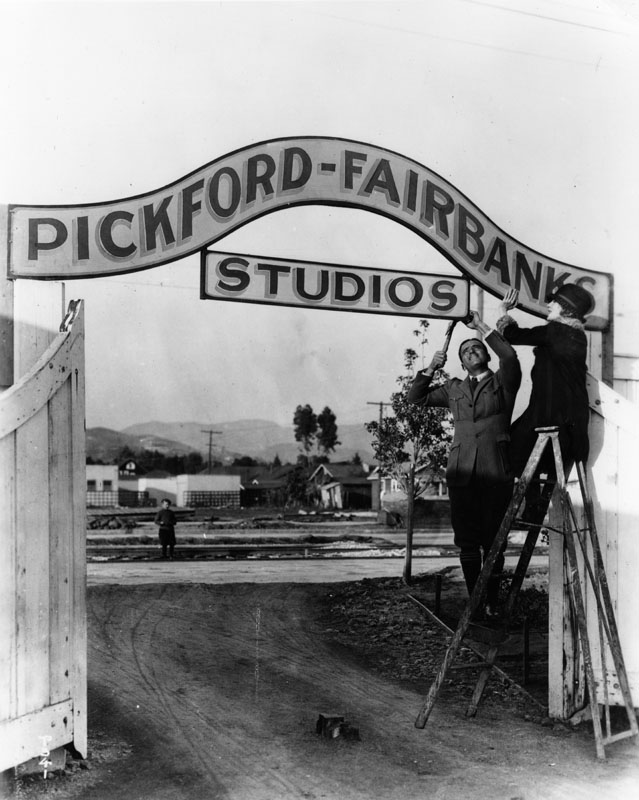At the opening of 2020, we have 125 years of cinema history to look back on, something very exciting. For over 100 years audiences have been sitting down and experiencing the magic of cinema. But with all that history, it is easy for films to disappear, for every Uncut Gems there’s a diamond in the rough. And so, with that in mind, given it’s been 100 years, it is about time we celebrate Pollyanna, arguably Mary Pickford’s best role.
Mary Pickford was one of the biggest stars of the silent era, perhaps only Chaplin ever matched her fame and appeal. She was incredibly influential both on and off screen. Born in Toronto, since being a child she travelled with her family in order to secure work on the stage, sacrificing her childhood in order to fulfil her dreams, and keep her family afloat. After six impoverished years, she was given one more summer to find a leading role before agreeing to give up. In 1909 she was given a screen test for a role in Pippa Passes. Though she didn’t land the role, the director took interest in her, and decided to cast her in various smaller roles. Pickford’s raw talent catapulted her to fame, leading her to star in numerous pictures throughout the 1910s, including Bishop’s Carriage, Caprice, and Tess of the Storm Country, the film which really sent her career into orbit.

All the while Pickford ran the Pickford-Fairbanks studio with her partner, Douglas. During their time running the studio Pickford asserted her many talents off screen, helping with the production of numerous silent pictures. However, there was trouble afoot. News was getting around that the contracts of Pickford, Chaplin, and other huge silent stars were about to be renewed, tying them down to even longer contracts, and giving them less creative control. This didn’t sit right with the stars, and so, going against the studios, they decided to form United Artists, a studio that would work to give filmmakers more creative control, allowing for riskier, more interesting films. After His Majesty, The American and When the Clouds Roll By, both in 1919 and both vehicles for her partner, the first United Artists film of the 2020 would star Pickford in what is, debatably, her finest role; Pollyanna.
The film was based on a novel of the same name written by Eleanor H. Porter in 1913, and starred Pickford in the titular role as a young girl who, upon the death of her father, moves to a plantation in New England to live with her aunt. While growing up on the plantation, Pollyanna and her friend Jimmy (Howard Ralston) get up to various hijinks, much to the bemusement of Pollyanna’s Aunt (Katherine Griffith). The film is categorised as one of Pickford’s “little girl” films, often seen as almost outside the main body of work, in which (as is suggested) Pickford played roles much younger than her actual age (i.e. Pickford was 27 when playing 12-year-old Pollyanna). The idea that these roles are Pickford’s “lesser roles” is frankly ridiculous. In Pollyanna Pickford delivers such a naturalistic performance. As Pollyanna she conveys not simply an innocence as we would expect from a child role, but a curiosity, and a kindness and unwavering optimism that is only found in a child. Her expression, posture, and movement all convey what it is to be a child, that being filled with energy and enthusiasm. Despite the tragedy that has befallen Pollyanna, she is filled with brightness.

Something that really signifies Pollyanna’s worldview throughout the film is her favourite pastime, something she calls “The Glad Game”. The game is simple, it involves just naming each thing you’re glad for. The most wholesome game in the history of cinema, unchallenged. The game is played with numerous characters throughout the film, but perhaps the most noteworthy moment is when it’s played with an old recluse, whom everyone says is glad for nothing. Pollyanna brings with her an old friend, who is deaf, blind, and plays the accordion. Pollyanna’s friend plays her music for the recluse, who upon learning of her disabilities, declares he is glad for his sight and hearing.
This brings to light an interesting theme throughout the film, that of disability, and that it doesn’t equal ailment. Late in the film, through her attempts to save another little girl, Pollyanna becomes paralysed from the waist down. However, this doesn’t stop her from trying to spread joy. Pollyanna pleads with her Aunt to contact Dr Tom, her unrequited love. Pollyanna in her wheelchair seems just as joyful as ever, asking to see Jimmy as usual. The film doesn’t treat disability as many do, like a hinderance or something negative, nor does it shy away from the realities and the difficulties that are involved in having a disability. Instead, the film presents them simply as a reality, something that people live with and thrive despite of.
In Pollyanna, Pickford lights up the screen with a truly special performance, one that carries through the persistent optimism that she was forced to believe in as a child. 100 years on the film stands out as a monument to how performance can, accidentally or purposefully, expose traits hidden within us. Centred around one of the greatest performances committed to film, Pollyanna manages to demonstrate the heart-warming softness we get from Gerwig’s Little Women 100 years before its release. Both films contain performances filled with hope, strength, and defined character. Pollyanna stands out as a brilliant companion to Little Women, and the performances in Gerwig’s film prove that this joyous dramatic tradition which started with Pickford is still alive today.


Leave a comment